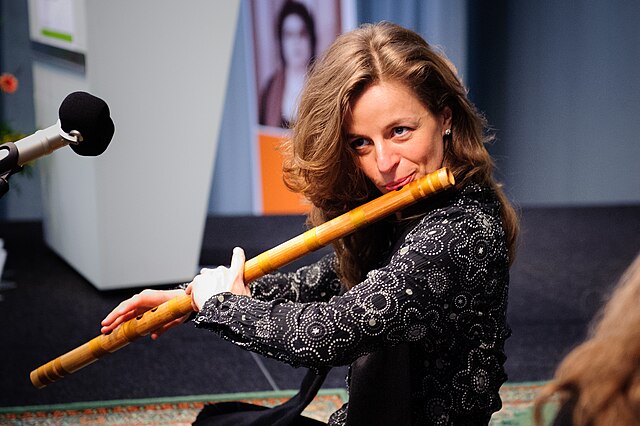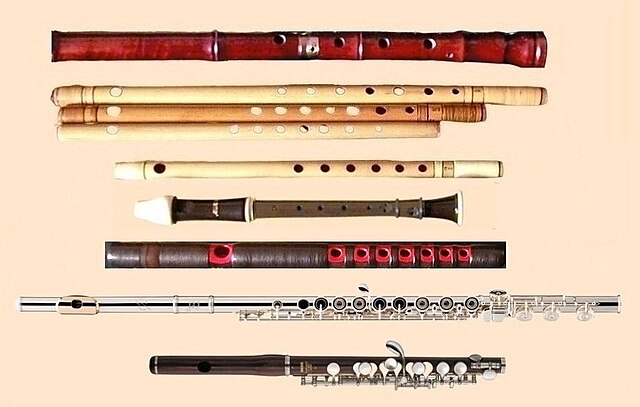The bamboo flute, especially the bone flute, is one of the oldest musical instruments known. Examples of Paleolithic bone flutes have survived for more than 40,000 years, to be discovered by archaeologists. While the oldest flutes currently known were found in Europe, Asia too has a long history with the instrument that has continued into the present day. In China, a playable bone flute was discovered, about 9000 years old.
Krishna playing flute with his herd of cows in Bucesvara Temple, Koravangala. 12th century.
A group of bansuri flutes, grouped low pitched to high pitched.
Musician playing a large bansuri; the larger instrument is lower toned than a smaller bansuri.
Public performance by Newar musicians with flutes, Lalitpur.
The flute is a member of a family of musical instruments in the woodwind group. Like all woodwinds, flutes are aerophones, producing sound with a vibrating column of air. Unlike woodwind instruments with reeds, a flute produces sound when the player's air flows across an opening. In the Hornbostel–Sachs classification system, flutes are edge-blown aerophones. A musician who plays the flute is called a flautist or flutist.
Shinobue and other flutes
Statue of Krishna playing a flute
Chinese women playing flutes, from the 12th-century Song dynasty remake of the Night Revels of Han Xizai, originally by Gu Hongzhong (10th century)
Bone flute made of a goat's tibia, 11th–13th century AD.








